It must be the travelling cyclists’ worst nightmare – to arrive at a foreign airport with a damaged and unrideable bike. That’s what happened to my partner Nic and I in Bologna in 2004. One bicycle had no stem or saddle and the other a buckled back wheel. The prospect of riding standing on the pedals for three weeks did not appeal and in any case Nic’s back wheel was so buckled that it took a great deal of effort even to push it.
We decided that the damage was caused by a car lover/bike hater baggage handler throwing the bikes into the aircraft hold and then dumping massive cases on top of them.
We had travelled by British Airways from Gatwick, where BA staff were relaxed about transporting bicycles– no-one behaved as though we were two-wheeled aliens just landed from the planet Zog, as is often the case.
In 2002 despite the initial disbelief of KLM staff, our experience flying from Cardiff (via Brussels) to Rome had lulled us into a false sense of security. The bikes arrived in Rome, even after transfer from one aircraft to another in Brussels, without damage, but in 2004 and 2010 Flying from Gatwick and from Bristol Airports, it was a different story.
I suppose we should have realised in 2004 that there could be a problem, when the bikes were sent down on the narrow conveyor belt to be loaded with all the other luggage. In Bologna they were returned in their damaged state on the luggage carousel. In 2002 at Cardiff and Rome airports they were accepted and returned through a special ‘bulky luggage’ gate.
Our laid-back travelling philosophy when riding in Italy was to book flights and insurance and to have a general idea of where we were going, but trying to be cool with two broken bikes and no accommodation at 6pm in Bologna airport, was an effort. It took another hour to report the damage and the missing bits, before we managed to book accommodation near Bologna Railway station and to get our busted bikes on a bus.
Not the best start to three weeks cycling in our chosen destination – the Salento coast, Puglia – the heel of Italy. However, later that evening our problems seemed to lessen after a pile of antipasti, a plate of pasta, and a carafe of ‘vino locale’!
The following morning we pushed our bikes the one kilometre to the nearest bike shop, only to find the sort of bike shop common in England in the1950s and 60s. To be fair they were more interested in servicing Vespas and Lambrettas than bicycles.
They could do nothing with Nic’s buckled back wheel, nor did they have a stem and saddle to fit my bike. Just as we began to feel helpless and worried the manager of the shop directed us 200 metres down the road to a cycle shop reminiscent of John’s bikes or Avon Valley Cyclery in Bath.
Here my saddle was replaced inside 20 minutes, and even though we were told that we would have to wait three days for a new wheel for Nic’s bike, we were relieved and we felt confident that the owner, a former competitive cyclist judging by the photos on the shop wall, would be as good as her word. In fact the wheel was ordered, delivered and fitted in two days.
Our plan was to catch a train from Bologna to Lecce, centre of Baroque architecture in the heel of Italy, and from there cycle around the Salento Coast, before getting the train back to Bologna.
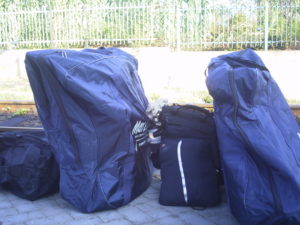
Bikes in bags, with luggage. Is this the best way to fly with bikes?
However, when we tried to book on trains that catered for bikes, we found that we would have to make seven changes and the journey would take two days. Only some Italian trains could at that time accommodate bicycles, so at this stage we did begin to wonder whether we would ever get to our destination and begin our cycle touring.
We were obviously just very lucky In 2002 to travel by train from Rome to Naples with bikes in just a few hours.
Eventually we decided to buy bike bags, so we could dismantle and pack away the bikes. We would then be able to get on to Eurostar Italia and get to the south in a matter of hours , rather than days. I returned to our friendly local bike shop and sure enough they kept bike bags in stock – once again it looked as if we might get to the Salento after all.
We spent three great days in steaming hot Bologna – definitely ‘bike city’ – flat with wide paved avenues and plenty of pedestrianisation/bike/public transport around the central ‘due torre’ area, where two wheeled vehicles outnumber four and the buses were all spanking new.
On Friday morning we arrived at the railway station to board the train to Lecce. The train was due to leave from platform nine, so that was where we took the wheels off our bikes, removed the panniers, turned the handlebars parallel with the frame and stored the frame in the middle of the bag with the wheels on either side. Bags and bikes are very heavy, unless you have ultra- light expensive models – ours, named ‘Bicci and Roadie’ are solid worker touring bikes.
With an earlier train stuck at platform nine 15 minutes after it should have left, we speculated on the chances of a platform change and agreed that this would fit with our luck so far.
Sure enough our train rumbled into platform six, signalling a rush of passengers into the platform subway. There were no lifts from subway to platform. Imagine having to carry bike bags and four full pannier bags from platform 1 to platform 2 at Bath Spa station in two minutes and you have some idea of the struggle we had to catch the Eurostar to Lecce. I’m sure my bike is heavier than Nic’s because she seemed to manage the transfer with ease while I struggled to stay upright! We just about made it and were at last on our way complete with working bikes.
After staying in Lecce for one night we decided to start our ride from Gallipoli, a short 40 minute train ride away. We were told at the station that the local train we were to take would carry bikes without having them in bike bags. No one had told the train manager so we had once again, to dismantle the bikes and put them in the bags.
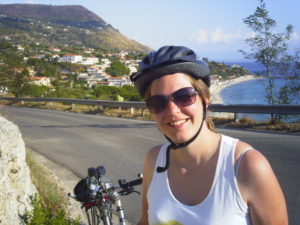
Nic in the south of Italy
Just over two weeks later after some wonderful riding around the Salento coast, from Gallipoli, to Torre San Giovanni, past Santa Maria di Leuca the southernmost point of Italy, Tricase Porto, Santa Cesarea Terme and its cold water spa, Porto Badisco the easternmost point in Italy and Otranto, we cycled into Lecce in the hot evening sunshine for the night train to Bologna.
Right at the start of our ride at Lido Conchiglie in the last steaming hot days of August, we spent time on the beach and in the sea, with three nights spent at the edge of the Mediterranean eating raw mussels, clams and giant clams, all uncooked, grilled octopus and cuttlefish and drinking the ridiculously cheap, but very pleasant “vino locale” all served by the local barbeque chefs in a taverna with white plastic tables and chairs and paper table cloths.
No standing on ceremony here in an eating place reminiscent of the ‘kiss me quick’ seaside resort cafes still to be seen in traditional British seaside resorts, but the quality of the food and wine set it apart from these. This is still one of the most memorable places where we have eaten. In fact we ate at this fish “cafe” three nights in a row.
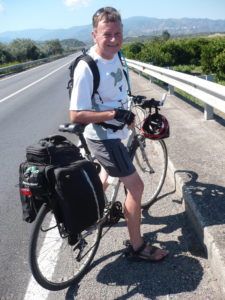
Me in the south, one pannier containing a bike bag
The stay in Lido Conchiglie was the beginning of two weeks of cycling through olive groves and along the coast. Sometimes following the Giro d’Italia route at our, by comparison with a “Grand Tour”, snail’s pace.
This, our second cycling holiday in Italy, once we had reached the Salento, had been fantastic. We didn’t ever look upon our cycling holidays in Italy as an endurance test. We stopped when and where we wanted to for as long as we wanted and always met friendly, welcoming local people.
On our return train journey from the south the bikes were snugly bagged for the train, when the conductor said, ‘no bicci’! Apparently there was no room even for the bags. We insisted that the bags were not bikes, but simply luggage. After some consultation with Other train staff, the conductor directed us to a couchette used for storage of bedding, where there was just about enough room for the bike bags.
The return flight presented no problems with the bagged bikes when we arrived at Gatwick and our time for reassembly was down to about 10/15 minutes. The train journey back to Bath (via Reading) was also without incident.
This is a cautionary tale as far as travelling with bikes is concerned, but there is still a distinct lack of advice about getting bikes on aircraft. BA takes bikes free, but as we discovered there seems to be no special handling for them. Advice from bike shops varies from putting them in ‘bike boxes’, in cardboard boxes, or in plastic bags, or not in anything at all. No one seems to know what to do with bike boxes once you get to your destination.
Maybe it’s better for the bikes to be seen so that it is obvious that they are bikes – not something we would advise, or should they be covered in cardboard or installed in wooden bike boxes, if they are available? There is little advice given by the airlines, and you get the impression that although massive surf boards and sets of golf clubs are OK, they would rather throw the bicycles out over the channel.
While we were cycling we met a group of Italian cyclists who were riding from Santa Maria di Leuca (Lands End) to Rome in ten days, to make the local authorities along the route aware of some of the problems cyclists have in Italy. They invited us to join them and were very impressed with our National Cycle Network and how most British trains are able to take bicycles, albeit in limited numbers. Services in the UK for bikes are not perfect, but they could be a lot worse.
However, a conductor on the train to Brighton in late September in the same year ordered us off the train at Bradford on Avon and threatened to call the police when we refused, because there were three bikes in the designated bike area rather than two. This intransigence tends to be the exception rather than the rule! The problem was solved by a commonsense station manager and we were able to continue on our journey.
However, most train companies have joined the anti-cycle lobby in banning bikes on some trains and insisting on booking on those where they are allowed. Booking is now normal practice on intercity 125s.
It would be much better if trains were designed to carry more bikes in the UK than in present rolling stock. I recently travelled from Bristol Temple Meads to Cardiff and at one stage counted seven bikes in the carriage. There could be areas where bikes could be hung by the front wheels if space was provided.
However, despite all the obstacles that arose on our touring holidays, although unwelcome, none were insurmountable and did little to detract from our overall enjoyment of the holiday. Nic and I decided that we would fly with bikes again, but we will definitely take our bike bags, despite having to cart the bags around with us for the whole holiday. We might even consider lighter bikes!
Roger Symonds and Nic Rattle 27th August 2004
The Post Script to this piece on travelling with bikes is that in all we holidayed with bikes in Italy five times, completing riding the coastline of the “boot” of Italy and riding in Sardinia. Our last holiday was in 2010 where my bike suffered a broken “hanger” which enables the gears to work by attaching them to the frame, both at the beginning of the holiday and at the end.
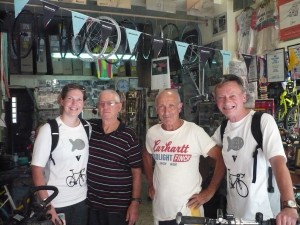
Brilliant cycle shop and mechanics that saved
our holiday in 2010
It was only through some innovative cutting and filing by a lovely Italian bike mechanic in a bike shop in Reggio that we were able to continue our holiday.
At the end of the holiday I watched while a baggage handler at Bristol airport threw my bike bag from one end of the baggage truck to the other. Breaking the part so brilliantly made up by the Italian bike mechanic, so maybe the damage at the beginning of that holiday was also caused in Bristol.

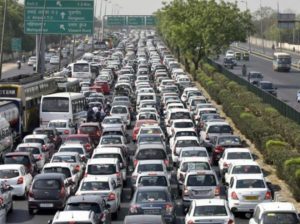

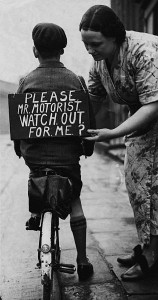 There is a vaste difference in the amount of traffic on the roads, when the private schools and the state schools, are on holiday.
There is a vaste difference in the amount of traffic on the roads, when the private schools and the state schools, are on holiday.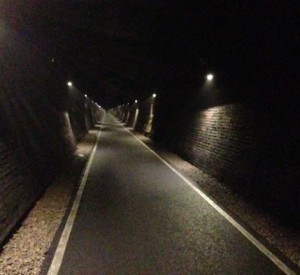
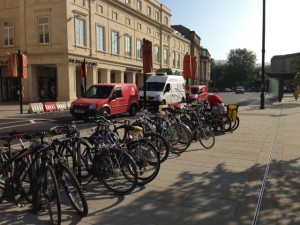
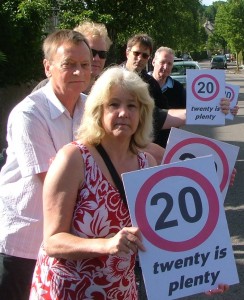
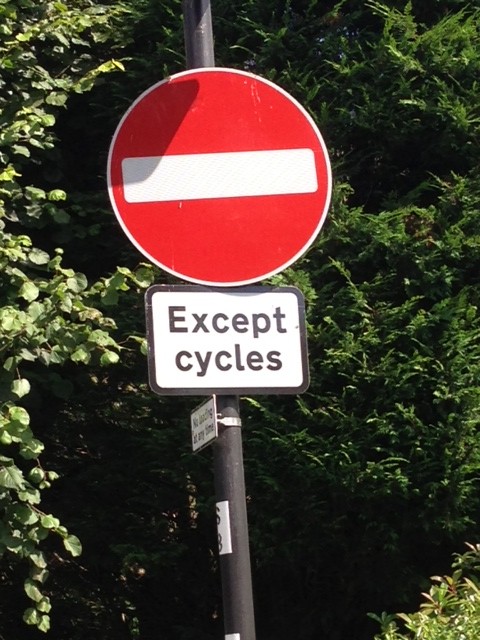
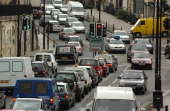


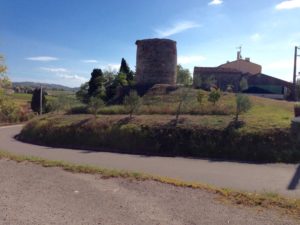
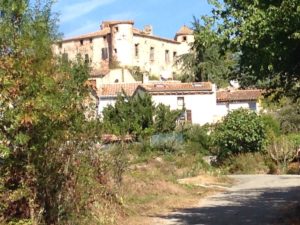
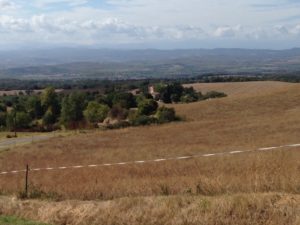









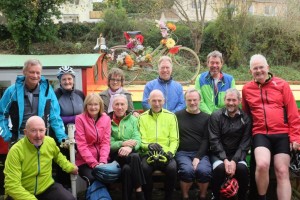
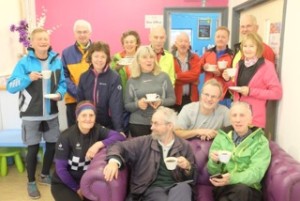

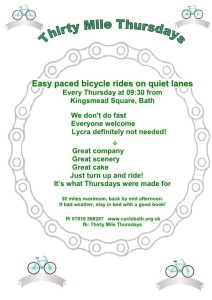

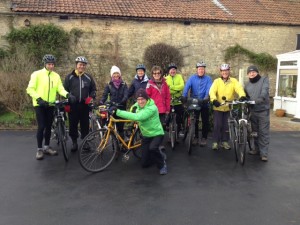
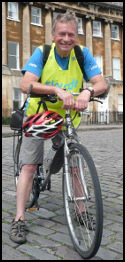 Hello, I'm Roger Symonds and I have created this blog to highlight local and wider cycling issues. Given the incredible interest and increase in cycling we must not miss this opportunity to provide the the infrastructure that gets even more people out on bikes in a safer environment.
Hello, I'm Roger Symonds and I have created this blog to highlight local and wider cycling issues. Given the incredible interest and increase in cycling we must not miss this opportunity to provide the the infrastructure that gets even more people out on bikes in a safer environment.